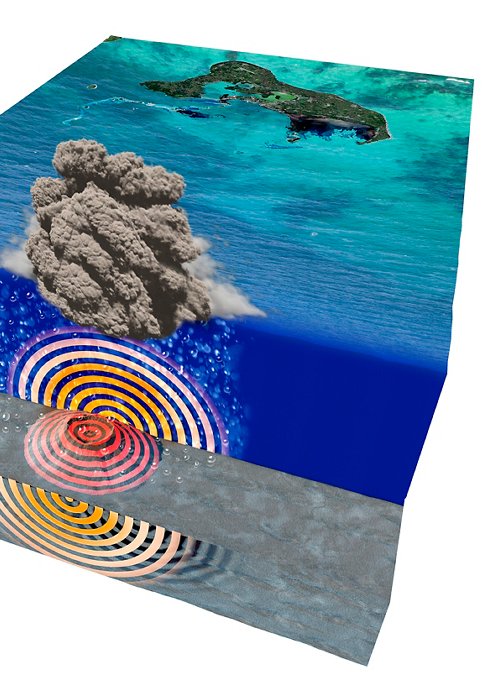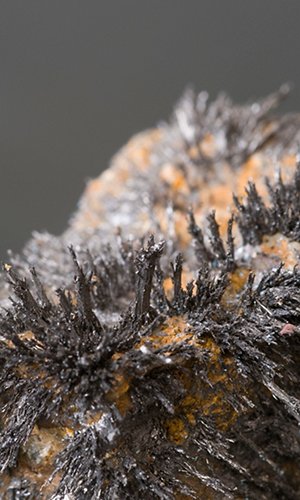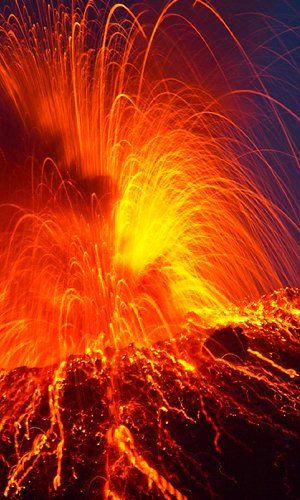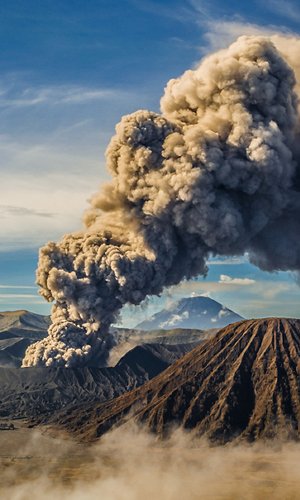On 15 January, at about 5 pm (Italian time), the Hunga Tonga-Hunga Ha’apai volcano erupted, spewing a huge amount of ash into the atmosphere. The volcano is part of Tonga, the Polynesian kingdom in the South Pacific that has over 170 islands, many of which are small and uninhabited. These include Hunga Tonga and Hunga Ha’apai, the two rocky cliffs about a hundred metres high that give the volcano its name, and which represent only a tiny summit of the volcano. In fact, the two islands are only part of the edge of the caldera, the crater of an enormous submerged volcano about 1800 m high and 20 km wide. The Tonga archipelago is located in a very active seismic zone, coinciding with the junction between the Pacific and Indo-Australian plates, which are among the largest on the planet. It is an area where enormous forces are concentrated and developed, which become evident with volcanic activity.
This is not the first time that Hunga Tonga-Hunga Ha’apai has made the news. The first eruption in recent years took place in 2009, followed by others in 2014 and 2015. These were minor events. On 19 December 2021, the volcano produced a series of major explosions with the emission of a high column of ash and smoke into the atmosphere. The last eruption, on 15 January, was considerable: the column of dust and ash reached a height of 30 km and a diameter of 250 km. A grey plume so large that it can be seen by the cameras of satellites orbiting the Earth. The eruption was accompanied by thousands of lightning flashes triggered by charged particles released into the first layers of the atmosphere. The shock wave travelled through the air thousands of kilometres as far as South America. The tsunami (the tidal wave that follows earthquakes, landslides and underwater volcanic activity) devastated the interiors of many islands and reached as far as the coasts of Japan, Chile, Peru and Ecuador. The ash has covered many islands in the archipelago. NASA claims that the explosion was 500 times more powerful than the nuclear bomb that destroyed Hiroshima.
Geologists have been keeping watch on the volcano for several years. Researchers at the University of Auckland (New Zealand) have established that violent eruptions of Hunga Tonga-Hunga Ha’apai occur every thousand years: the last major event, in fact, dates back to around 1100. On the basis of the available data, the 15 January eruption is neither the last nor the most violent and seems to be a warning that an even more powerful event may soon occur.
Large volcanic eruptions affect the climate by ejecting large quantities of particles into the atmosphere. These particles remain in the upper atmosphere and obscure sunlight, causing a general cooling of the planet. The last time was in 1815 when the Tambora volcano in Indonesia hurled a total of 40 cubic kilometres of pulverised rock into the atmosphere up to a height of over 40 km. The Earth’s average temperatures plummeted: 1816 is remembered as a year with no summer, and consistently wet and cold weather. Fortunately, the amount of ash released by the latest eruption of Hunga Tonga-Hunga Ha’apai seems to be insufficient to significantly cool the Earth. For the moment, perhaps.
By Andrea Bellati




